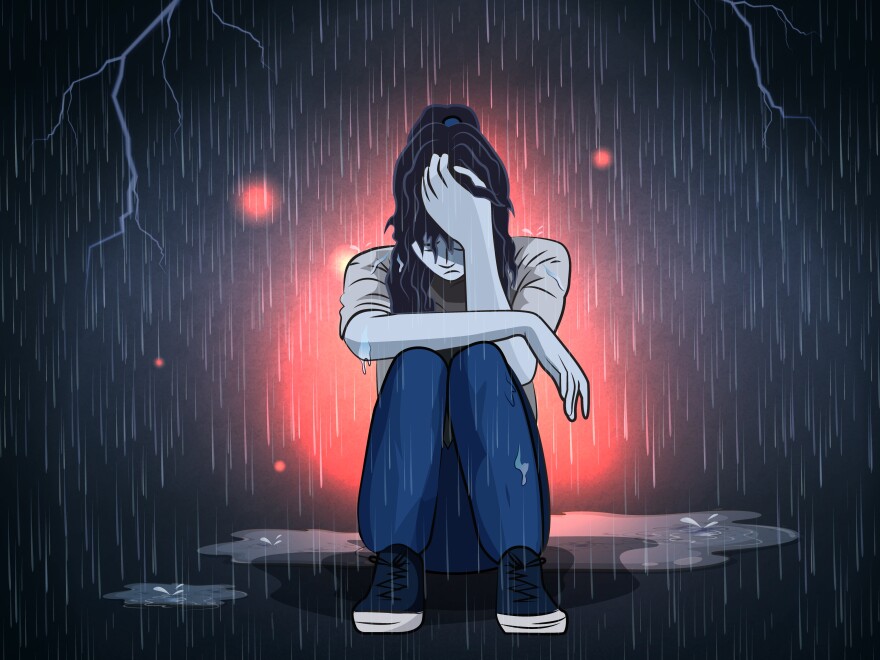According to a recent study, children who visit emergency rooms during mental health crises and require hospitalization frequently remain there for days. For children enrolled in Medicaid nationwide, that occurs in around 10% of all mental health emergency visits.
According to a study published in JAMA Health Forum, depressive disorders and suicidal thoughts and attempts were the most prevalent mental health emergencies that resulted in such prolonged stays, or boarding.
“So a child shows up at an emergency department with a mental health condition, [and] about one in ten times, they’re staying for three days or longer,” says John McConnell, author of the primary study and director of Oregon Health and Science University’s Center for Health Systems Effectiveness.
Additionally, McConnell and his colleagues discovered that up to 25% of mental health visits resulted in children being boarded at the emergency room for three to seven days in a few states, including North Carolina, Florida, and Maine.
Dr. Jennifer Havens, chair of the NYU Grossman School of Medicine’s department of child and adolescent psychiatry, says the results are not shocking.
“But having data like this is very important to see the effect across the country,” she continues. Havens did not participate in the research.
Although emergency department boarding has been on the rise nationwide for decades, the increase in pediatric mental health cases has been especially sharp in recent years.
“States have not been able to keep up with behavioral health systems as the children’s behavioral health crisis nationwide has increased,” says Dr. Rebecca Marshall, an associate professor of child and adolescent psychiatry at OHSU who was not involved in the new study.
Even though the study primarily examined Medicaid claims, children with private health insurance also face this issue.
“We really have struggled to build capacity over time to increase the number of inpatient beds,” she continues. “A lot of the time, children will arrive at the hospital in need of an inpatient psychiatric bed, but none are available. They then bide their time until a bed opens up and a child in one of the psychiatric facilities is discharged.
According to Marshall, there are surprisingly few psychiatric beds available for children in many states. For instance, Oregon only has 38 beds available for pediatric psychiatric cases with the highest need. “And then we have less than 200 residential beds, and that’s a lower acuity treatment program that tends to be longer term.”
“There’s an enormous problem across the country with a lack of access to mental health services, both on the [inpatient and] outpatient side,” Havens adds. Children with mental health disorders can avoid a crisis by receiving proper outpatient care.
Families are more likely to take their child to the emergency room (ER) if the child is experiencing a mental health crisis if there are insufficient options for both inpatient and outpatient mental health care.
nevertheless “what they find when they go to the emergency department is that there often isn’t any available care,” Marshall explains. “There’s nothing immediate.”
According to Havens, the majority of emergency rooms lack a child and adolescent psychiatrist “because we’ve just never invested in the resources to have this kind of service for kids.”
Additionally, even with a psychiatrist on staff, children experiencing mental health crises may experience worsening symptoms if they are kept in emergency rooms for days.
According to Marshall, the majority of these kids who board in an emergency room wind up confined to “one small room,” which is occasionally a room without windows. “They can’t get out of the room. They are unable to work out. They are unable to engage with other children, which is a crucial aspect of growth. Additionally, it is common for inpatient units to lack any extra therapeutic activities.
“I’m not sure what the right words are, but, [it’s] really challenging, heartbreaking situation for families that have a child and they’re trying to kind of find a place to stabilize them, and they’re stuck in the emergency department,” states McConnell.
Copyright 2025 NPR






